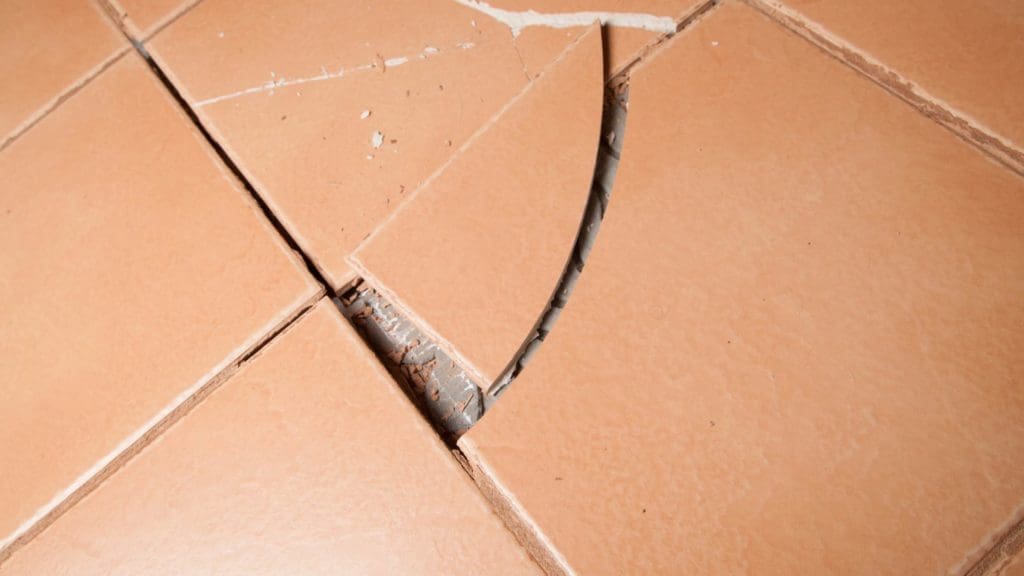A sinking foundation is one of the worst types of damage that could happen to a home, especially when the floor and concrete slab are sloping toward the middle of the home. Depending on the foundation problems identified, a specialist may recommend specific repair methods. For instance, driven concrete piers or pile guard piers, or a combination of both, could be installed underneath the outer edge of the foundation to support a side of the foundation that has started to sink. Sometimes, however, a foundation requires additional support, especially if it’s sinking in the middle.
Reasons Why Your Foundation Sags Toward the Middle of the Home
In the Houston area, the soil below our homes is the main culprit responsible for many foundation problems, including foundation sinking and shifting. Because the soil in Houston has high clay content, it tends to expand and contract significantly, according to seasonal changes. Unlike sandy soils, which allow water to flow right through and drain quickly, clay soils tend to absorb and hold large amounts of water. Whether excess water is the result of poor drainage around your home or plumbing leaks under the slab, it will eventually lead to soft, weak soil, which may fail to provide adequate support for your home. As a result, your foundation will start to sink and shift.
Sometimes, one section of the foundation can sink faster and deeper than the others, a process which is known as differential settlement. Left unaddressed, differential settlement gets worse over time due to repeated expansion-contraction cycles, potentially leading to extensive damage. Large cracks developing in walls, doors, and windows no longer opening and closing properly, walls bowing or leaning inward, and foundation separating from the home’s structure are a few obvious signs of differential settlement. The structural damage within your home will continue until adequate repair methods are implemented.
Because there is no one-size-fits-all solution that can be applied to foundation damage, it’s important to have an experienced professional inspect your foundation and indicate the best repair method for your particular situation.
Foundation Repair from the Inside: When It’s Required and How It’s Done
When a foundation begins to sink and shift, foundation repair specialists recommend a specific repair method that can raise the foundation back to its original position and stabilize it there. Depending on the location and type of foundation damage, foundation repair can be accomplished by installing driven concrete piers and/or pile guard piers underneath the:
- outer edge of the foundation area that is sinking;
- outer edge of the foundation, around the full perimeter of the home;
- middle area of your foundation.
If piers need to be installed underneath the outer edge as well as the middle area of your foundation, and your home has a crawlspace, the piers can be installed in the crawlspace. If your home has a slab-on-grade foundation, meaning it lacks a crawlspace, you can choose to have the piers installed from the inside or outside.
The typical pier installation is on the outside of the foundation. After the piers are positioned at the specified locations underneath the perimeter beam, the technicians will dig tunnels at regular intervals from one end of the foundation to the other. These tunnels allow technicians to reach the middle section underneath your foundation, where they will install piers to make the entire foundation level again and prevent future foundation problems.
Tunneling under the foundation is the most desirable foundation repair method because it causes less damage to the interior floor. However, piers can also be installed from the inside of the home, as mentioned above. In general, this method is recommended when the homeowner wants to protect specific exterior structures (e.g. decks, patios, paver driveways, stamped concrete, elaborate landscaping, etc.), which would be expensive or inconvenient to repair or replace. Although installing piers from the inside is less expensive and faster than the tunneling method, this method is more disruptive and typically requires flooring replacement afterward.
Irrespective of the method chosen, foundation repair involves excavating small holes at the site of each pier, which is then installed underneath the slab and pushed into the ground to the point of refusal with the help of a hydraulic press. After all the piers are installed in their places, the technicians use a hydraulic bottle jack to lift the middle area of your foundation. The foundation is slowly restored to its original level position with the help of a hydraulic pump, which is attached to all the piers. Once the foundation is level again, the pier columns are attached to the foundation brackets to stabilize the foundation. The final step involves removing the hydraulic system, backfilling the tunnels and any other excavations, and repairing the slab, if necessary.
If you’ve noticed any foundation problems, fixing them as soon as possible could help you avoid extensive structural damage that may affect your entire home. At Allied Foundation, our foundation repair experts employ their expertise and experience along with the highest quality materials to ensure that your foundation is properly and permanently repaired. Contact us today to schedule your free inspection and consultation!

